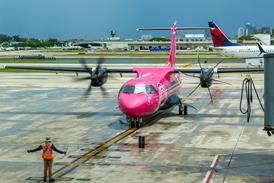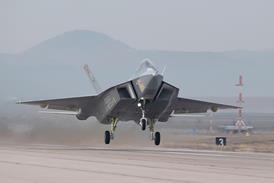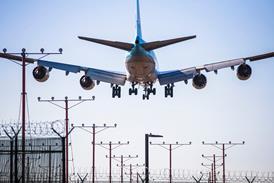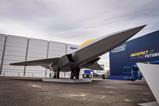Lockheed Martin is close to completing its certification activity for the F-35’s delayed Technical Refresh 3 (TR-3) update, while it eyes further sales demand for the type in Europe.
“We recently finished work on TR-3,” says J R McDonald, Lockheed’s vice-president F-35 strategy and business development.
“What we have been working on throughout is to get the process stabilised to the point where it is consistently able to operate for the pilot,” he says. “We believe we have reached that point.”

The TR-3 programme introduces new hardware and software with the fifth-generation fighter. That standard will underpin a future Block 4 evolution which McDonald describes as “the most aggressive upgrade of any fighter in history”, spanning new sensors, weapons and interoperability features.
Asked when Lockheed expects the US Department of Defense to clear TR-3-standard jets to enter frontline use, McDonald says: “We still have one combat capability to go that needs final closure with the US government before they will make that determination. We think we are very close to that,” he adds, without detailing the remaining activity involved.
“Once we get the final authority from the government, we’ll provide software updates to the operational flight programme,” says Lockheed Martin Aeronautics president Greg Ulmer.
Lockheed began delivering TR-3-configured aircraft to the USA and international customers last July, with those jets initially restricted to supporting pilot training activities. The company has now shipped 200 fighters equipped with the new software and hardware standard: a milestone achieved last week.
Speaking at the Paris air show on 16 June, McDonald said total deliveries of the F-35 have now reached 1,185, with Lockheed expecting to hand over between 170 and 190 of the jets in 2025.
Hailing the type’s increasing adoption by customers in Europe, he points to the receipt of contracts last year from the Czech Republic (for 24 aircraft), Greece (20, plus 20 options) and Romania (32, and 18 options). Existing operator Italy also earlier this year indicated that it could boost its programme of requirement by 25 aircraft, for a total of 115, and F-35B operator the UK has expressed interest in also fielding A-model examples.
Current potential sales candidates on the continent include Austria, Portugal and Spain.
“For Europe, the F-35’s growing presence is a powerful example of allied deterrence in action,” McDonald says. “And it’s not just the aircraft – it’s the co-operation between US and European industry that is an additional source of security, as well as economic progress for everybody involved.”
Among examples, “Rheinmetall in Germany is now receiving its initial parts so they can deliver centre fuselages,” he says. Finnish company Patria is making similar strides to begin forward fuselage assembly, while Belgian industry will later this year deliver their first horizontal tails for the F-35.
“In the very near future, we can have an F-35 roll out of the factory in Cameri [Italy] with a Finnish forward fuselage, a German centre fuselage, Leonardo wings, a Belgian set of tails, and mission systems from the UK,” he notes.
Meanwhile, asked to comment about US President Donald Trump’s recent reference to the possible future availability of a twin-engined ‘F-55’, Ulmer says: “The new administration in the United States is interested in the continuation of air dominance.
“We learned a lot as we put our proposal together for next generation [air dominance], relative to technology and about how to do our work significantly differently,” he says. Boeing earlier this year won the US Air Force’s NGAD fighter contest with its F-47.
“We are interested to take that learning and apply it to F-35 in the future,” Ulmer says. “How do we take that learning on the approach to our NGAD proposal in terms of what a new F-35 would be, or a derivative?”































